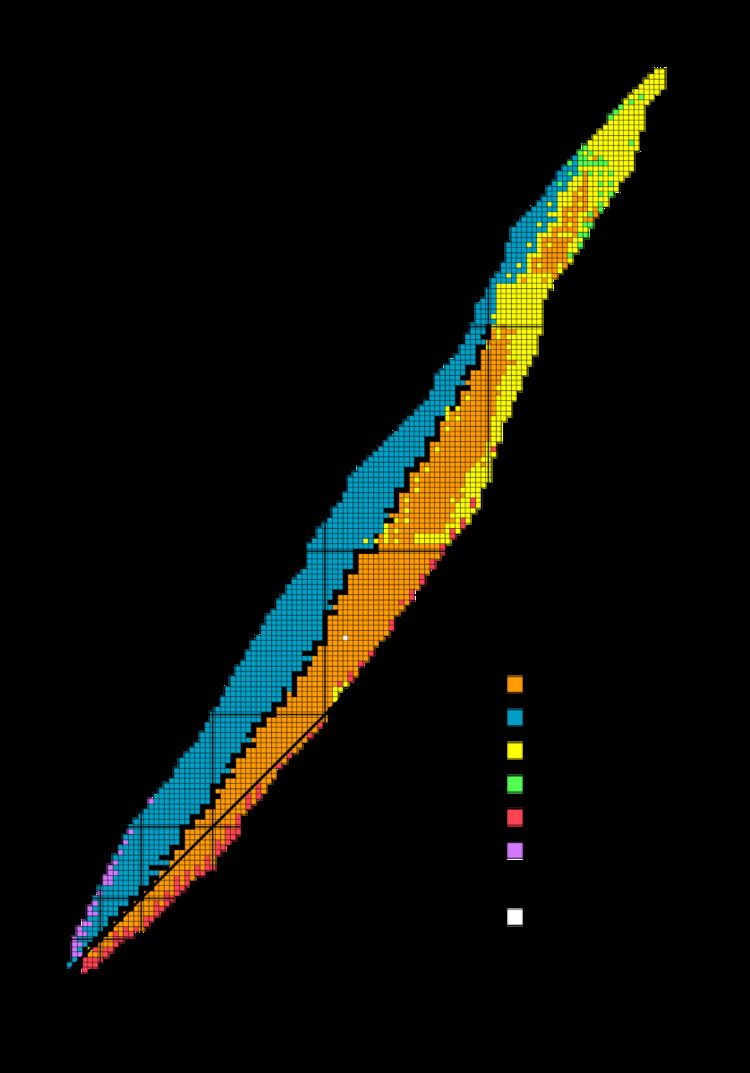 | ||
In nuclear physics, a magic number is a number of nucleons (either protons or neutrons, separately) such that they are arranged into complete shells within the atomic nucleus. The seven most widely recognized magic numbers as of 2007 are 2, 8, 20, 28, 50, 82, and 126 (sequence A018226 in the OEIS). Atomic nuclei consisting of such a magic number of nucleons have a higher average binding energy per nucleon than one would expect based upon predictions such as the semi-empirical mass formula and are hence more stable against nuclear decay.
Contents
The unusual stability of isotopes having magic numbers means that transuranium elements can be created with extremely large nuclei and yet not be subject to the extremely rapid radioactive decay normally associated with high atomic numbers. Large isotopes with magic numbers of nucleons are said to exist in an island of stability. Unlike the magic numbers 2–126, which are realized in spherical nuclei, theoretical calculations predict that nuclei in the island of stability are deformed. Before this was realized, higher magic numbers, such as 184, 258, 350, and 462 (sequence A033547 in the OEIS), were predicted based on simple calculations that assumed spherical shapes: these are generated by the formula
Origin of the term
According to Steven A. Moszkowski (a student of Maria Goeppert-Mayer), the term "magic number" was coined by Eugene Wigner: "Wigner, too, believed in the liquid drop model, but he recognized, from the work of Maria Mayer, the very strong evidence for the closed shells. It seemed a little like magic to him, and that is how the words ‘Magic Numbers’ were coined.”
Double magic
Nuclei which have neutron number and proton (atomic) numbers each equal to one of the magic numbers are called "double magic", and are especially stable against decay. Examples of double magic isotopes include helium-4, oxygen-16, calcium-40, calcium-48, nickel-48, nickel-78, and lead-208.
Double-magic effects may allow existence of stable isotopes which otherwise would not have been expected. An example is calcium-40, with 20 neutrons and 20 protons, which is the heaviest stable isotope made of the same number of protons and neutrons. Both calcium-48 and nickel-48 are double magic because calcium-48 has 20 protons and 28 neutrons while nickel-48 has 28 protons and 20 neutrons. Calcium-48 is very neutron-rich for such a light element, but like calcium-40, it is made stable by being double magic. Nickel-48, discovered in 1999, is the most proton-rich isotope known beyond helium-3. At the other extreme, nickel-78 is also doubly magical, with 28 protons and 50 neutrons, a ratio observed only in much heavier elements apart from tritium with one proton and two neutrons (Ni-78: 28/50 = 0.56; U-238: 92/146 = 0.63).
Magic number shell effects are seen in ordinary abundances of elements: helium-4 is among the most abundant (and stable) nuclei in the universe and lead-208 is the heaviest stable nuclide.
Magic effects can keep unstable nuclides from decaying as rapidly as would otherwise be expected. For example, the nuclides tin-100 and tin-132 are examples of doubly magic isotopes of tin that are unstable, and represent endpoints beyond which stability drops off rapidly.
In December 2006 hassium-270, with 108 protons and 162 neutrons, was discovered by an international team of scientists led by the Technical University of Munich having the half-life of 22 seconds. Hassium-270 evidently forms part of an island of stability, and may even be double magic.
Derivation
Magic numbers are typically obtained by empirical studies; if the form of the nuclear potential is known then the Schrödinger equation can be solved for the motion of nucleons and energy levels determined. Nuclear shells are said to occur when the separation between energy levels is significantly greater than the local mean separation.
In the shell model for the nucleus, magic numbers are the numbers of nucleons at which a shell is filled. For instance the magic number 8 occurs when 1s1/2, 1p3/2, 1p1/2 energy levels are filled as there is a large energy gap between the 1p1/2 and the next highest 1d5/2 energy levels.
The atomic analog to nuclear magic numbers are those numbers of electrons leading to discontinuities in the ionization energy. These occur for the noble gases helium, neon, argon, krypton, xenon, radon and oganesson. Hence, the "atomic magic numbers" are 2, 10, 18, 36, 54, 86 and 118.
In 2007, Jozsef Garai from Florida International University proposed a mathematical formula describing the periodicity of the nucleus in the periodic system based on the double tetrahedron.
In 2010, an alternative explanation of magic numbers was given in terms of symmetry considerations. Based on the fractional extension of the standard rotation group, the ground state properties (including the magic numbers) for metallic clusters and nuclei were simultaneously determined analytically. A specific potential term is not necessary in this model.
